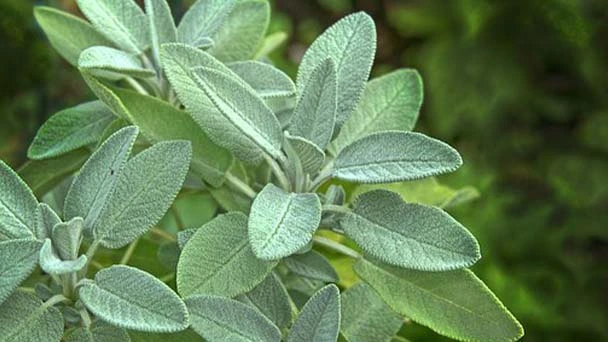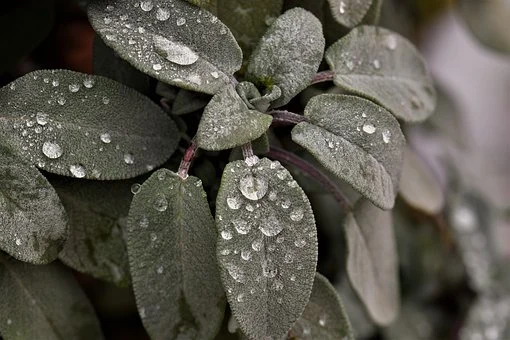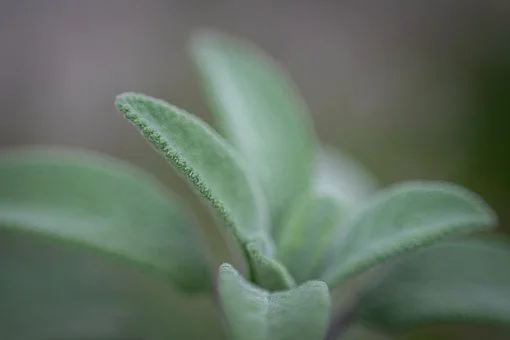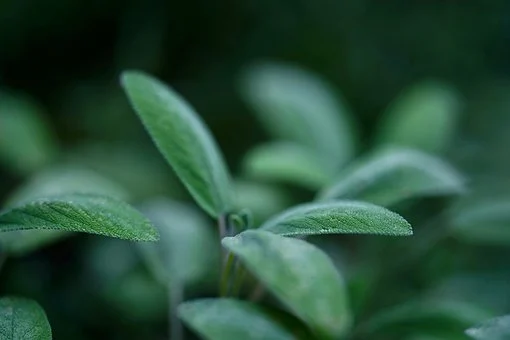Planting and Growing Sage Plant (Salvia Officinalis)
Written by Ivy
Dec 13 2022

Sage Plant (Salvia Officinalis) is an annual blue purple plant. Sage Plant's flowering period is from June to September. Sage plant mainly grows on hillsides, roadsides, shade grass, waterside and shade. Sage plant is often used as kitchen herbs or medical herbs. It is also used to extract essential oils and make sachets. In recent years, sage plant is often used as an ornamental plant and planted on grassland or grassland. So how to plant and care for sage plant?

Also Read: 13 Best Companion Plants For Celery - Best & Worst Plant for Celery
Be sure to prepare enough during sage plant pruning. Sage plant is a very ornamental herb flower. After a winter, it has many withered branches and leaves, and the branches at the bottom are easy to Lignify and look very messy.
If it is not trimmed, the top of the branches and leaves of sage plant will not grow again, and there will be fewer and fewer flowers. It must be trimmed before summer. We usually prune sage plant in spring, that is, after spring is warm, the temperature is completely stable above 18 degrees. We can't prune sage plant until sage plant resumes growth and ends dormancy.
Sage plant is a perennial aromatic plant, which combines the properties of more than 20 plants and is famous for its properties. Sage plant has the effects of nourishing, preventing spasm, antisepsis, antibacterial, diuretic and cleaning wounds. It is also effective for sore throat and lip ulcer. It can adjust menstrual period, stimulate appetite and slow down flatulence.
Sage plant has a strong smell after drying. When cooking soup or meat food with strong taste, add less permission to ease the taste, and enjoy it in salad, which can give full play to the effect of beauty. Sage Plant Flowers can be used to make tea, give off fragrance and eliminate oil in the body.
Sage Plant Quick InfoWhen to Plant Sage PlantWhen does Sage Plant Bloom & HarvestSage Plant Care in DetailSage Plant WateringSage Plant SoilSage Plant LightSage Plant TemperatureSage Plant HumiditySage Plant FertilizerSage Plant PruningSage Plant RepottingSage Plant Pest & Disease Control1. Bacterial diseases2. Mold3. Botrytis Cinerea4. Fusarium5. VirusSage Plant PropagationSage Plant Propagation from CuttingSage Plant Propagation from SeedSage Plant Benefits
Sage Plant Quick Info
| Botanical/Scientific Name | Salvia Officinalis |
| Common Name | Culinary Sage, Common garden Sage, or Garden Sage |
| When to Grow/Bloom/Harvest | Plant during the cool days of spring or fall/Blooms in early summer |
| Uses | Digestive problems |
| Origin | Mediterranean and Asia Minor |
| Light Care | Six to eight hours of full sun daily |
| Soil Care | Sandy, loamy, well-draining soil |
| Temperature Care | Around 60 - 70°F (15 - 21°C) |
| Humidity Care | Average room (around 40% relative humidity) |
| Watering | Wait until your soil is dry, and then thoroughly water |
| Pruning Care | Prune the sage plants after the flowering stage |
| Fertilizer Care | 5-10-10 fertilizer |
| Propagation | Cuttings |
| Toxic | Thujone can be poisonous |
| Flower Color | Blue, Pink, Purple, Red, White, Yellow |

When to Plant Sage Plant
Sage plant should be sown in spring or autumn. From its budding habits, the climate temperature in these two seasons is more conducive to budding. Seedlings should be propagated from September to April of the next year. The climate temperature is more favorable for sage plant seedlings. You can also plant sage plants with Celery plants together for better growth.Also Read: 13 Best Companion Plants For Celery - Best & Worst Plant for Celery
When does Sage Plant Bloom & Harvest
Sage plant blooms from June to September, but if it is planted in different areas, its specific flowering time will not be the same. When sage plant blooms, the flowers are very small, but the amount of flowers is relatively large and the ornamental value is relatively high. Sage plant flowers can normally open for 2 days, but the specific opening time is also different, because the climate environment and maintenance methods are different.Sage Plant Care in Detail
Sage Plant Watering
Sage plant needs more water during its growth. We should water it frequently and keep the soil moist. But be careful not to be too waterlogged and do not have ponding. The water should be drained in time in rainy season. It is necessary to water antifreeze water before winter. Just pour it on the root. If potted plants are used to manage new plants, it is recommended to water them to let the roots absorb enough water, which can restore growth faster. For the sage plant just bought, if the soil is wet, it will not be watered, and it will be managed normally after a period of time.Sage Plant Soil
When propagating sage plant, we can use loose, breathable and alkaline soil. During the growing season, it needs to be placed in a warm and bright place, and watered in time when the soil becomes dry.Sage Plant Light
Sage plant has high illumination. If it is placed in the shade for a long time, it will slowly turn yellow and shed leaves, resulting in death. In summer, we should pay attention not to let the sun shine directly on Sage plant. We can place it on the balcony where the sun shines astigmatism. We can keep it in the sun at ordinary times.Sage Plant Temperature
Sage plant must be planted in warm areas to ensure the normal growth of sage plant. Generally, the temperature of sage plant is stable at 15 to 25 ℃, which is a very suitable temperature. However, in fact, the climate change of sage plant from seed sowing in spring to flowering in autumn is certainly not within the optimum growth temperature of sage plant, so sage plant can cope with it as long as the temperature does not change extremely in a short time.Sage Plant Humidity
Sage plant should be cultivated and maintained in a ventilated and high humidity environment. Sage plant is suitable for growth, and the air humidity is 60% - 70%. Sage plant should be watered more during vigorous root elongation and less during dormancy after flowering.Sage Plant Fertilizer
Sage plant likes fertilizer. In addition to applying sufficient base fertilizer, fertilizer should be applied every half a month in the growing season, and nitrogen fertilizer should be the main fertilizer in the early stage. In the later stage, potash fertilizer should be applied to improve the quality and yield of sage plant.
Sage Plant Pruning
Sage plant is a perennial herbaceous flower. It is very easy to plant and does not need regular care. It is drought resistant. If you want sage plant to grow more vigorous branches and leaves, you must pay attention to regular pruning, so that it can grow into lush shrubs and be conducive to more flowers. If you plant sage plant in your yard, after a winter, many branches and leaves wither and look very ugly. After winter, the withered branches and leaves of sage plant should be cut off in time to let it sprout new branches again, so as to maintain the vigorous growth of aquatic plants.Be sure to prepare enough during sage plant pruning. Sage plant is a very ornamental herb flower. After a winter, it has many withered branches and leaves, and the branches at the bottom are easy to Lignify and look very messy.
If it is not trimmed, the top of the branches and leaves of sage plant will not grow again, and there will be fewer and fewer flowers. It must be trimmed before summer. We usually prune sage plant in spring, that is, after spring is warm, the temperature is completely stable above 18 degrees. We can't prune sage plant until sage plant resumes growth and ends dormancy.
Sage Plant Repotting
If it is a potted sage plant, we can replace the soil in the basin regularly. However, sage plant does not have particularly high requirements for soil, so it can be used once every two or three years. We can prepare it with sandy soil and base fertilizer. After sage plant repotting, there shall be no strong light.Sage Plant Pest & Disease Control
1. Bacterial diseases
Bacterial brown class disease is the most serious disease of sage plant. It is characterized by brown spots on the leaves. It has an oily or heart shape and is surrounded by a yellow shape. The treatment methods include adjusting the nitrogen amount of fertilizer solution, removing diseased plants and maintaining stable relative humidity. Chemicals have no effect on the disease. This bacterial problem can be avoided only by using healthy plants with good growth conditions.2. Mold
Too much water change in the medium or inappropriate EC value will cause root damage, so it promotes mold to attack the tissue. The treatment of sage plant disease is to reduce the EC Value of irrigation water and temporarily reduce the water content of medium.3. Botrytis Cinerea
Gray mold on the petals will form many small spots on Sage plant flowers. The reason is that the plants have been in a humid state for too long or the relative humidity is too high.4. Fusarium
Fusarium causes black triangular spots, forming yellow and dark red at the base of the leaf. This disease will cause sage plant blades to fall quickly. This disease is easy to occur when the root is in ponding.5. Virus
Sage plant infected by virus is characterized by smaller flowers and slower growth. However, the growth traits of some varieties were not affected by virus infection. The symptoms of the virus were more obvious in the stage of low temperature flowering. The biggest impact of virus on SAGE plant is its growth rate.
Sage Plant Propagation
Sage Plant Propagation from Cutting
Sage plant propagation from cutting is also one of the propagation methods of the plant. Cutting selection is a very key step in cutting. Stronger, better growing and disease-free branches should be selected, which can improve the survival rate of cutting. From May to June, select the top tip that is not too tender at the top of the branch, with a length of 5 ~ 8 cm, cut it under the stem node, remove 2 ~ 3 leaves at the base, and the plant spacing is 5 cm according to the row × 5 cm, inserted into the seedbed, 2.5 ~ 3 cm deep. We can wait for sage plant cuttings to be watered and covered with plastic film for moisturizing. After 20 ~ 30 days, we can plant new roots with appropriate density.Sage Plant Propagation from Seed
Sage plant propagation from seed is generally in spring and early autumn. Before sowing, in order to improve the emergence rate and early emergence, we can first soak sage plant seeds in warm water at 50 ℃. When the temperature drops to 30 ℃, wash them with clean water for several times, and then put them under a constant temperature of 25 ~ 30 ℃ to promote germination or soak them in clean water for 24 hours before sowing. Direct seeding or seedling transplanting. Sage plant is suitable for shallow sowing because its seeds are small. After sage plant seed sowing, we should cover the thin soil and sprinkle water frequently to keep the soil moist.Sage Plant Benefits
When cooking greasy meat products, we can add some sage plant to help digestion; Add a teaspoon to boil and soak for 10 minutes to make sage plant tea; Sage plant essential oil has the effect of beauty and beauty, as well as antibacterial and anti-inflammatory.Sage plant is a perennial aromatic plant, which combines the properties of more than 20 plants and is famous for its properties. Sage plant has the effects of nourishing, preventing spasm, antisepsis, antibacterial, diuretic and cleaning wounds. It is also effective for sore throat and lip ulcer. It can adjust menstrual period, stimulate appetite and slow down flatulence.
Sage plant has a strong smell after drying. When cooking soup or meat food with strong taste, add less permission to ease the taste, and enjoy it in salad, which can give full play to the effect of beauty. Sage Plant Flowers can be used to make tea, give off fragrance and eliminate oil in the body.
Latest Updated
- Benefits of Bugleweed - 7 Science-backed Health Benefits
- Bugleweed Dangers & Side Effects - Is It Poisonous?
- How to Plant Evergreen Trees - What You Should Know
- When to Plant Evergreens - Grow Guide for Evergreen Trees
- 12 Wonderful Evergreen Shrubs for Your Garden
- 12 Popular Evergreen Plants with Pictures for Beginners
- When And How To Prune A Lilac Bush Like a Pro
- How to Grow & Care for Lilac Vine (Hardenbergia Violacea)
- Japanese Lilac Tree (Syringa Reticulata) Care & Propagation Guide
- Shumard Oak Pros and Cons - What to Know
Popular Articles
- Winter maintenance of Antirrhinum Majus
- How to Grow Terminalia Mantaly Tree
- How to Grow and Care for Crossostephium Chinense
- How to grow Antirrhinum Majus in spring
- Peristeria Elata (Dove Orchid) Profile: Info & Care Guide
- Underwatered Snake Plant (Sansevieria Trifasciata) - Signs And How To Fix
- How to Care for Brazilian Jasmine Plant (Mandevilla Sanderi)
- How to Grow & Care for Graptopetalum Purple Delight in Summer
- Rosa Chinensis (China Rose): Plant Growing & Care Tips
- How to Care for Baby Sun Rose (Aptenia Cordifolia)